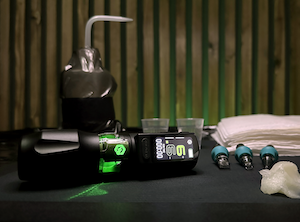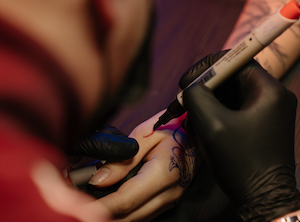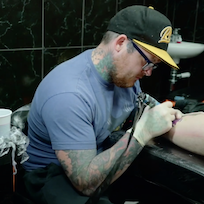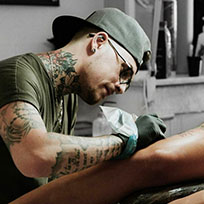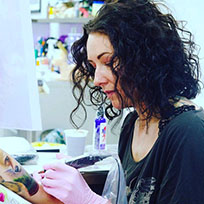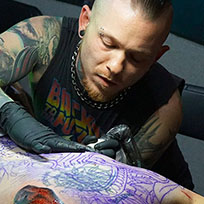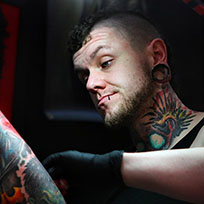With a tattoo, you can change your appearance the way you want it. The tattoo ink decorates your skin according to your ideas. But there are also skin changes over which you have no active influence and which you would like to cover up with a tattoo. Is it possible to tattoo over stretch marks, moles and scars and cover them up with a tattoo?
In this Advice Hub article, we look at the question of whether and how it is possible to tattoo over skin changes.
Stretch marks and tattoos
Formation of stretch marks
Stretch marks on the skin are a purely aesthetic problem for most people. They do not usually cause any medical problems and are caused by severe stretching of the skin tissue. They occur mainly after pregnancy, weight gain (fat or muscle mass), drug therapy and during growth and are not reversible. Stretch marks often appear on the stressed areas of the body such as the abdomen, hips, upper arms and breasts.

Overstretching of the connective tissue causes “cracks” in the subcutaneous tissue and reddish marks form, which leave visible scars after healing. We call these irreparable scars stretch marks.
Tattooing over stretch marks
To hide stretch marks that have developed, there are the same treatment options. They can be treated with micro-needling or special cicatricial creams that can be used to make the scar less visible. However, this usually does not completely reverse the stretch marks. Tattoos are therefore a popular method of concealing stretch marks.
Generally, it is possible to cover stretch marks with one or more tattoos. However, the condition of the skin should always be taken into consideration. The stretch marks must be completely and well-healed to create an effective tattoo. In addition, the tattoo artist should already have experience with tattooing scars, as this requires a different technique and a greater understanding of the skin structure than a normal tattoo.
The design also plays a crucial role. In some cases, it is not necessary to tattoo directly over the stretch marks, but to work with them and incorporate them into the design. In some cases, an experienced tattoo artist can make the stretch marks “invisible” without tattooing directly over them.
Moles and tattoos
Moles (Latin: naevus) are benign changes in the skin. They usually have a brown colour and are caused by malformations of the skin or mucous membrane. Moles or liver spots occur both flat and as skin elevations on any part of the skin. Port-wine stains and haemangiomas also belong to the group of nevi.
Tattooing over moles
Covering a birthmark with a tattoo is not a good idea. Tattooing small flat moles is perfectly possible, as with freckles (see below). However, if the moles are larger and elevated, they should not be tattooed. There are several reasons for this.
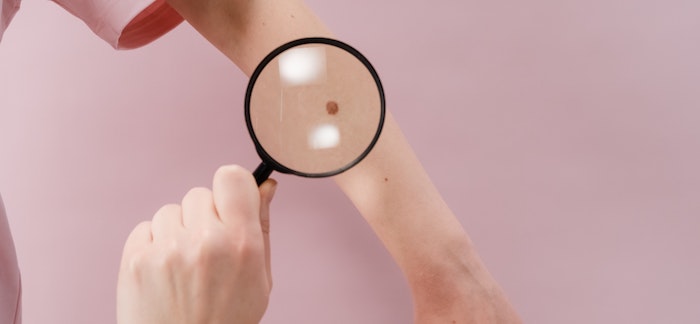
On the one hand, it is extremely difficult for the tattoo artist to assess how the ink applied will look in the tattoo from a purely aesthetic point of view. Furthermore, elevated moles, in particular, bleed much more than normal skin, as the skin structure is altered significantly.
Another reason why tattoos should not be done on larger and prominent moles is that the moles can change over time. They are an indicator of malignant changes in the skin, such as skin cancer, and should therefore not be covered with ink. Normally, in such cases, tattooing is done around the mole or with the moles already worked into the design.
In general, both a dermatologist and an experienced tattoo artist should be consulted before tattooing on a mole. The risk of causing an unwanted injury or not being able to see an indicator of unhealthy skin is high and should never be undertaken without professional advice. In the USA, it is even forbidden by law in some states to tattoo moles!
To obtain an extensive tattoo despite moles, it is possible to have the moles professionally removed by a dermatologist before the tattoo session. However, it should be kept in mind that the removal will leave a scar that must heal completely before it can be tattooed.
Scars and tattoos
Formation of scars
Scars are the final stage of a wound that has not healed completely. If, for example, the tissue has been cut or the skin has been torn very deeply, the dermis (the layer of skin under the epidermis) is injured and scarring occurs. The scar is usually reddish at first and becomes much lighter than the surrounding skin over time. With particularly severe injuries, the scar also becomes raised and is uneven.
Tattooing over scars
Tattoos are a good way to cover scars. To tattoo over a scar, it is IMPORTANT (!) that the scar has healed completely. The longer the scar has healed, the better. A tattoo artist with the appropriate experience can judge very well whether a scar has healed enough to be tattooed.
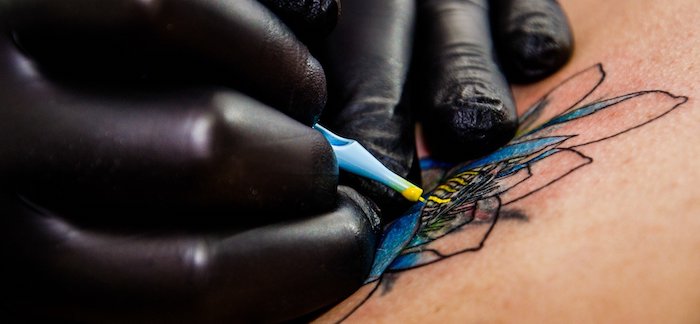
Tattooing achieves a similar effect on the scar as micro-needling. The skin is minimally injured in the epidermis and a renewed wound healing occurs, which causes the scar tissue to recede. Raised scars become flatter and the scar tissue absorbs the ink well.
Although scars can actually be tattooed relatively well, it is still advisable to have an experienced tattoo artist look at the skin before the tattoo session to find out whether the desired tattoo will work with the scar tissue. Depending on the skin damage, it can make sense not to tattoo the scar as such, but to let it flow into the design. Not all types of scars can be tattooed. It should also be taken into account that tattooing on scars can cause more pain than on normal skin. Scar tissue is usually more sensitive than normal skin and should therefore be treated with care.
Freckles and tattoos
Freckles, unlike moles, are pigment accumulations in the skin that occur mainly in people with blonde and red hair. These pigment spots are caused by increased melanin production in the skin cells. For this reason, they become more noticeable, especially in summer when exposed to the sun.
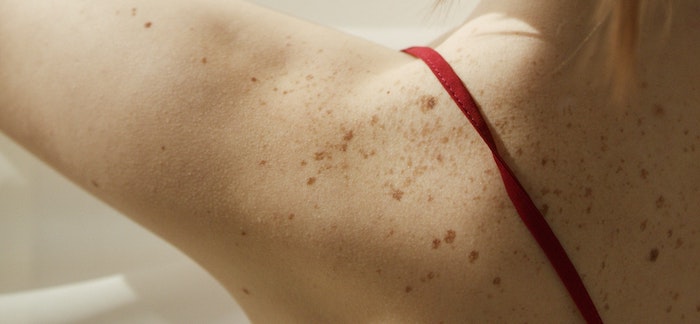
Tattooing freckles, just like tattooing pigment spots (age spots), is possible without restrictions. However, it should be taken into account when designing the tattoo that freckles can change and become darker when exposed to the sun. Therefore, it is recommended to have the tattoo done when the freckles are darkest. This is usually the case in summer (which is actually an inconvenient time for tattoos, see our Advice Hub article “When Is The Best Time To Get A Tattoo?“).
Conclusion
Whether tattooing on altered skin is possible should always be decided on an individual basis. The best advice can always be given by an experienced tattoo artist. In some cases, it makes sense to talk to a dermatologist beforehand to minimise the risk.
Once you have decided on a tattoo, you can read here how long your tattoo will take to heal.













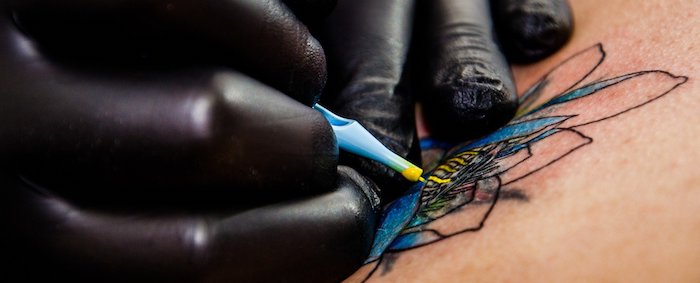
 What Is A Prince Albert Piercing?
What Is A Prince Albert Piercing? The Best Tattoo Ink 2024
The Best Tattoo Ink 2024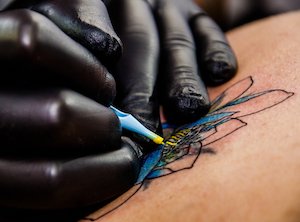 Tattooing Over Stretch Marks, Moles, Scars And Other Skin Conditions
Tattooing Over Stretch Marks, Moles, Scars And Other Skin Conditions 11 Best Fonts For Tattoos 2022
11 Best Fonts For Tattoos 2022 Advice For An Itchy Tattoo
Advice For An Itchy Tattoo
